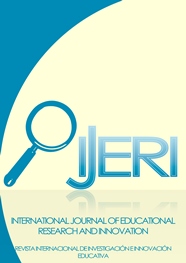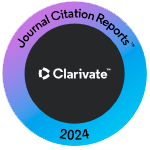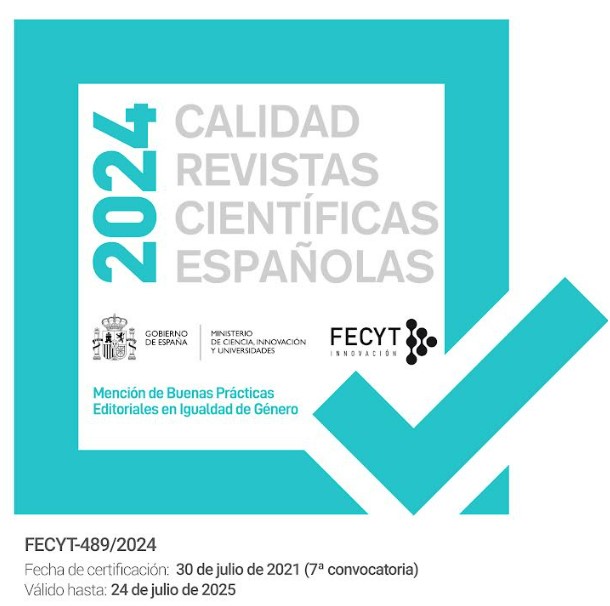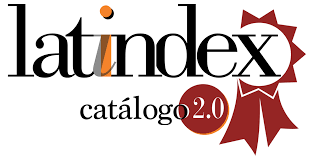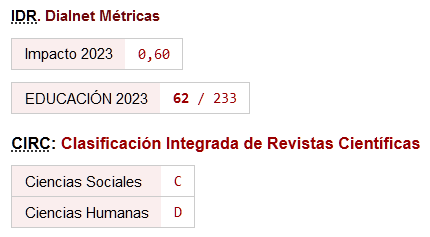La comprensión lectora en el alumnado sordo desde la perspectiva de la Escuela Inclusiva
Palabras clave:
Comprensión, lectura, sordos, Escuela InclusivaResumen
La comprensión lectora es una competencia básica que influye de forma notable en el rendimiento académico. Los procesos de decodificación y de comprensión oral son claves para establecer el acceso a una representación adecuada de los textos escolares. Los alumnos sordos presentan dificultades generales en lenguaje oral y además en el lenguaje escrito. A continuación se presenta una revisión de las investigaciones realizadas en los últimos años que ponen de manifiesto las dificultades de los alumnos sordos a todos los niveles de la lectura y especialmente en los procesos específicos de la comprensión de textos. Finalmente, se plantean algunas propuestas de intervención en la comprensión lectora, adaptadas a la diversidad funcional sensorial auditiva, dentro del marco contextual de la Escuela Inclusiva, con estrategias y técnicas concretas cuya eficacia ha sido demostrada a lo largo del tiempo.
Descargas
Citas
Archbold, S., Harris, M., O’Donoghue, G., Nikolopoulos, T., White, A. & Lloyd Richmond, H. (2008). Reading abilities after cochlear implantation: the effect of age at implantation on outcomes at five and seven years after implantation. International Journal of Pediatric Otorhinolaryngology, 72, 1471-1478.
Arnáiz, P. (2009) Análisis de las medidas de atención a la diversidad en la Educación Secundaria Obligatoria. Revista de Educación, 349, 203-223.
Block, C. & Pressley, M. (2003). Best practices in comprehension instruction. In L.M.Morrow, L.B. Gambrell, & M. Pressley (Eds.), Best practices in literacy instruction (pp 111-126). New York: Guilford Press.
Booth, T., Simón, C., Sandoval, M. Echeita, G. & Muñoz, Y. (2015). Guía para la Educación Inclusiva. Promoviendo el Aprendizaje y la Participación en las Escuelas: Nueva Edición. EICE. Revista Iberoamericana sobre Calidad, Eficacia y Cambio en Educación, 2015, 13(3), 5-19.
Borgna, G., Convertino, C., Marschark, M., Morrison, C., Rizzolo, K. (2011). Enhancing deaf students’ learning from sign language and text: Metacognition, modality, and the effectiveness of content scaffolding. Journal of Deaf Studies and Deaf Education, 16, 79–100.
Bower, G. H., & Rinck, M. (2001). Selecting one among many referents in spatial situation models. Journal of Experimental Psychology: Learning, Memory & Cognition, 27, 81-98.
Cain, K. & Oakhill, J. (Eds.) (2007). Children's Comprehension Problems in Oral and Written Language: A Cognitive Perspective. New York, Guilford Press.
Cain, K. (2003). Text comprehension and its relation to coherence and cohesion in children’s fictional narratives. British Journal of Developmental Psychology, 21, 335-351.
Cain, K. (2010). Reading development and difficulties: An introduction. Oxford, UK: Wiley-Blackwell.
Castejón, L.A. y España, Y. (2004). La colaboración logopeda-maestro: hacia un modelo inclusivo de intervención en las dificultades del lenguaje. Revista de Logopedia, Foniatría y Audiología, 24, 55-66.
Coppens, K.M., Tellings, A., Schreuder, R. & Verhoeven, L. (2013). Developing a structural model of reading: the role of hearing status in reading development over time. Journal of Deaf Studies and Deaf Education, 18, 489-512.
Cragg, L. & Nation, K. (2006). Exploring written narrative in children with poor reading comprehension. Educational Psychology,21, 55-72.
Cuetos, F. (2008). Psicología de la lectura. España: S.A. Wolters Kluwer.
Cupples, L., Ching, T., Crowe, K., Day, J., & Seeto M., (2014). Predictor of Earl Reading Skill in 5 Years Old Children With Hearing Loss Who Use Spoken Language. Reading research quarterly, 49, 85-104.
De Vega, M., Díaz, J.M. & León, I. (1999). Procesamiento del discurso. En De Vega, M. & Cuetos, F. (Eds.), Psicolingüística del español (pp. 271-289). Madrid: Trotta.
De Vega, M., León, I., & Díaz, J. M. (1996). The representation of changing emotions in reading comprehension. Cognition and Emotion, 10, 303-321.
De Vega, M., Robertson, D. A., Glenberg, A.M., Kaschak, M. P. & Rinck, M. (2004). On doing two things at once: Temporal constraints on Actions in language comprehension. Memory & Cognition, 32, 1033-1043.
Domínguez, A. B., Pérez, I. & Alegría, J. (2012). La lectura en los alumnos sordos: aportación del implante coclear. Infancia y Aprendizaje, 35, 327-341.
Domínguez, A.B. & Alonso, P. (2004). La educación de los alumnos sordos hoy. Perspectivas y respuestas educativas. Málaga: Aljibe,
Domínguez, A.B. (2009). Educación para la inclusión de alumnos sordos. Revista latinoamericana de Educación Inclusiva, 3(1), 45-51.
Domínguez, A.B., Carrillo, M., Pérez, I. & Alegría, J. (2014). Analysis of Reading strategies in deaf adults as a function of their language and meta-phonological skills. Research in Developmental Disabilities, 35, 1439-1456.
Doran, J. & Anderson, A. (2003), Inferencing skills of adolescent readers who are hearing impaired. Journal of Research in Reading, 26, 256–266.
Easterbrooks, S., Lederberg, A., Antia, Sh., Schick, B., Kushalnagar, P. Webb, M., Branum-Martin, L. & Connor, C. (2015). Reading Among Diverse DHH Learners: What, How, and for Whom? American Annals of the Deaf, 159, 419-432.
Echeita, G. y Ainscow, M. (2011). La educación inclusiva como derecho. Marco de referencia y pautas de acción para el desarrollo de una revolución pendiente. Tejuelo, 12, 26-46.
Fernandez- Viader, M.P., Pertusa, E. & Valdespino, S. (2007). La integración sociocultural de la Comunidad Sorda en Cataluña. Implicaciones en las prácticas educativas. EMIGRA Working Papers, 80.
Fidalgo, R., Arias, O., Martínez, B., & Bolaños, F. J. (2011). Un nuevo enfoque en la evaluación on-line de la comprensión lectora. Internacional Journal of Developmental and Educational Psychology, 1(1), 639-647
Fountas, I., & Pinnell, G. S. (2006). Teaching for Comprehending and Fluency: Thinking, Talking, and Writing about Reading, K–8. Portsmouth, NH: Heinemann.
García-Madruga, (2006). Lectura y conocimiento. Barcelona. Paidós.
Geers, A. E., Moog, J. S., Biedenstein, J. J., Brenner, C. & Hayes, H., (2009). Spoken Language Scores of Children Using Cochlear Implants Compared to Hearing Age-Mates at School Entry. Journal of Deaf Studies and Deaf Education Advance Access, 14, 371-385.
Geers, A.E. & Nicholas J.G. (2013). Enduring advantages of early cochlear implantation for spoken language development. Journal of Speech, Language, and Hearing Research, 56,643-655.
Harris, M., & Terlektsi, E. (2010). Reading and spelling abilities of deaf adolescents with cochlear implants and hearing aids. Journal of Deaf Studies and Deaf Education, 16, 24-34.
Hoover, W. A., & Gough, P. B. (1990). The simple view of reading. Reading and Writing: An Interdisciplinary Journal, 2,127-160.
Kintsch, W. & Rawson, K.A. (2005).Comprehension. In M.J. Snowling, & C. Hulme, (Eds.), The science of reading: A handbook (pp. 209–226). Malden MA: Blackwell.
Kintsch, W., & Van Dick, T. A. (1978) Towards a model of text comprehension and reproduction. Psychological Review, 85,363-394.
Kintsch, W., (1988). The role of knowledge in discourse comprehension: A construction- integration model. Psychological Review, 95, 163-182.
Kintsch, W., (1998). Comprehension: A paradigm for cognition. Nueva York: Cambridge University Press.
Kyle, F, & Harris, M. (2011). Longitudinal patterns of emerging literacy in
beginning deaf and hearing readers. Journal of Deaf Studies and Deaf Education, 16 (3), 289-304.
Kyle, F. E., & Harris, M. (2006). Concurrent correlates and predictors of reading and spelling achievement in deaf and hearing school children. Journal of Deaf Studies and Deaf Education, 11, 273-288.
Kyle, F. E., & Harris, M. (2010). Predictors of reading development in deaf children: A three-year longitudinal study. Journal of Experimental Child Psychology, 107, 229-243.
Kyle, F.E. & Cain, K. (2015). A comparison of deaf and hearing children’s reading comprehension profiles. Topics in Language Disorders. 35, 2, 144-156.
LaSasso, C. J. (1993). Reading comprehension of deaf reader. The impact of too many or too few questions. American Annals of the Deaf ,138 (5): 435-441.
Le Normand, M.T. & Moreno-Torres, I (2014). The role of linguistic and environmental factors on grammatical development in French children with cochlear implants. Lingua 139, 26-38.
Lederberg, A. R. (2003). Expressing meaning: from communicative intent to building a lexicon. In M. Marschark & P. E. Spencer (Eds.), Oxford handbook of deaf studies, language, and education (pp. 247-260). New York, NY: Oxford University Press.
Lederberg, A. R., Miller, E. M., Easterbrooks, S. R., & Connor, C. M. (2014). Foundations for Literacy: An early literacy intervention for deaf and hard-of-hearing children. Journal of Deaf Studies and Deaf Education, 19(4) 438-455.
Lederberg, A. R., Schick, B., & Spencer, P. E. (2013). Language and literacy development of deaf and hard of hearing children: success and challenges. Developmental Psychology, 49(1), 15-30.
Leybaert, J. & Alegría, J. (2003). The role of cued speech in language development of deaf children. In M. Marschark, M. & P.E. Spencer, (Eds). Oxford handbook of deaf studies, language and education (pp.262-274). New York: Oxford University Press.
Long, D. L., Wilson, J., Hurley, R., & Prat, C. S. (2006). Assessing text representations with recognition: The interaction of domain knowledge and text coherence. Journal of Experimental Psychology: Learning, Memory, and Cognition, 32(4), 816.
López-Higes, R., Gallego, C., Martín-Aragoneses, M.T., & Melle, N. (2015).
Morpho-syntactic reading comprehension in children with early and late cochlear implants. Journal of Deaf Studies and Deaf Education, 20(2), 136-146.
Luckner, J. L., & Handley, C. M. (2008). A summary of the reading comprehension research undertaken with students who are deaf or hard of hearing. American Annals of the Deaf, 153(1), 6-36.
Luterman, D. (2009). El niño sordo. Madrid: Editorial Clave.
Manrique M. & Huarte A. (2002). Implantes Cocleares. Barcelona Masson.
Marschark, M & Wauters, L. (2008). Language comprehension and learning. In M. Marschark, M. & P.C. Hauser, P.C. (Eds). Deaf cognition: Foundations and outcomes (pp 309-350). New York: Oxford University Press.
Marschark, M., Lang, H.G., & Albertini, J.A. (2002). Educating deaf students: From research to practice. New York: Oxford University Press.
Marschark, M., Rhoten, C., & Fabich, M. (2007). Effects of cochlear implants on children's reading and academic achievement. Journal of Deaf Studies and Deaf Education, 12, 269-281.
Marschark, M., Sapere, P., Convertino, C., Seewagen, R. & Maltzan, H. (2004). Comprehension of sign language interpreting. Journal of Deaf Studies and Deaf Education, 4, 345-368.
Miller, P. (2013). The Reading Comprehension Failure of Turkish Prelingually Deaf Readers: Evidence from Semantic and Syntactic Processing. Journal of Developmental and Physical Disabilities, 25(2), 221-239.
Moreno, F.J., Saldaña, D. & Rodriguez-Ortiz, I. (2015). Reading Efficiency of Deaf and Hearing People in Spanish. Journal of deaf studies and deaf education, 20, 374-384.
Nation, K. (2005). Children's reading comprehension difficulties. En N. J. Snowing, & Ch. Hulme (Eds.), The Science of Reading: a Handbook (pp. 248-265). Victoria: Blackwell Publishing.
Oakhill, J., Garnham, A., & Reynolds, D. (2005). Immediate activation of stereotypical gender information. Memory & Cognition, 33, 972-983.
Paatsch, L.E., Blamey, P.J., Sarant, J.Z. & Bow, C.P. (2006). The effects of speech production and vocabulary training on different components of spoken language performance. Journal of Deaf Studies and Deaf Education 11, 39-55.
Paivio, A. (2008). How children learn and retain information: The dual coding theory. In Newman, S.B. (Ed.), Literacy achievement for young children in poverty (pp. 227–242). Baltimore: Paul. H. Brookes.
Pérez, I., & Domínguez, A. B. (2006). Reading abilities of deaf students with and without cochlear implants throughout compulsory education. Integración. Revista de la Asociación de Implantados Cocleares, 40, 7-11.
Perrig & Kinstch, (1985). Propositional and situational representations of text. Journal of Memory and Language, 24, 503-518.
Qi, S. & Mitchell, R. E. (2012). Large-scale academic achievement testing of deaf and hard-of-hearing students: Past, present, and future. Journal of Deaf Studies & Deaf Education, 17(1), 1-18.
Richardson, J. T. E., McLeod-Gallinger, J., McKee, B. G., & Long, G. L. (2000). Approaches to studying in deaf and hearing students in higher education. Journal of Deaf Studies and Deaf Education, 5, 156–173.
Sánchez E. (1993). Los textos expositivos: estrategias para mejorar su comprensión. Madrid: Santillana.
Sanford, A. & Garrod, S. C (1989). What, when, and how? Questions of immediacy anaphoric reference resolution. Language and Cognitlve Processes, 4, 235-262.
Scarborough, H.S. (2005). Developmental Relationships between Language and Reading: Reconciling a Beautiful Hypothesis with Some Ugly Facts. In H. W. Catts & A. G. Kamhi (Eds.) The connections between language and reading disabilities (pp. 3-24). Mahwah, NJ: Erlbaum.
Schirmer, B. R. (2000). Language and literacy development in children who are deaf. Boston: Allyn and Bacon.
Soriano, J., Pérez, I. & Domínguez, A.B. (2006). Evaluación del uso de estrategias sintácticas en lectura por alumnos sordos con y sin implante coclear. Revista de Logopedia, Foniatría y Audiología, 26 (2), 72-83.
Strassman, B.K. (1997). Metacognition and reading in children who are deaf: a review of research. Journal of Deaf Studies and Deaf Education, 2,140-149.
Szterman, R. & Friedmann, N. (2014). Relative clause reading in hearing impairment: different profiles of syntactic impairment. Frontiers in Psychology: Languages Sciences, 5, 1-16.
Toja, N. (2014) Hipacusia infantil. En Peña-Casanova, J. (ed.) Manual de logopedia. Barcelona: Masson.
Torres, S. & Santana, R. (2002). Intervención logopédica con sordos: procedimientos, tareas y materiales. En M. Puyuelo (Coord.). Intervención del lenguaje (pp.49-79). Barcelona: Masson.
Trabasso, T., & Bouchard, E. (2002). Teaching readers how to comprehend text strategically. In C. C. Block & M. Pressley (Eds.), Comprehension instruction: Research-based best practices (pp. 176- 200). New York: Guilford Press.
Trezek, B., Wang, Y., Woods, D., Gampp, T. & Paul, P. (2007). Using visual phonics to supplement beginning reading instruction for students who are deaf or hard of hearing. Journal of Deaf Studies and Deaf Education, 12, 373–384.
Ulloa & Velasco, (2011). Atención educativa al alumnado con sordera. En VVAA, Sordera Infantil. Del diagnóstico precoz a la inclusión educativa. Guía práctica para el abordaje interdisciplinar. Madrid, Confederación Española de Familias de Personas Sordas-FIAPAS.
Vaughn, S., & Linan-Thompson, S. (2004). Research-Based Methods of Reading Instruction: Grades K-3. Alexandria, Virginia: Association for Supervision and Curriculum Development.
Verdugo, M. A., (2009). El cambio educativo desde la perspectiva de la calidad de vida. Revista de Educación, 349, 23-43.
Verdugo, M.A. & Parrilla, A. (2009) Paradojas y dilemas en el proceso de inclusión educativa en España. Revista de Educación, 349, 15-22.
Vermeulen, A.M., van Bon, W., Schereuder, R., Knoors H., & Snik, A. (2007). Reading comprehension of deaf children with cochlear implants. Journal of Deaf Studies and Deaf Education, 12, 283-302.
Vidal-Abarca, E. (2000). Dificultades de comprensión lectora. En Miranda, A. Vidal-Abarca, E. & Soriano, M. (Eds.). Intervención psicopedagógica en las dificultades de aprendizaje (pp. 129-156). Madrid: Pirámide.
Wauters, L. N., van Bon, W. H. J., & Tellings, A. E. J. M. (2006). The reading comprehension of Dutch deaf children. Reading and Writing, 19, 49–76.
Yuill, N & Oakhill, J. (1991). Children´s problems in text comprehension Cambridge: Cambridge University press.
Zwaan, R. A., & Madden, C. J. (2004). Updating situation models. Journal of Experimental Psychology: Learning, Memory, and Cognition, 30,283–288.

